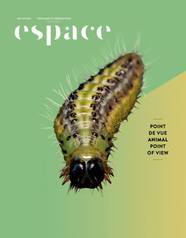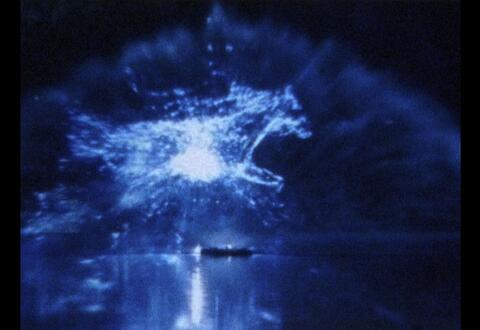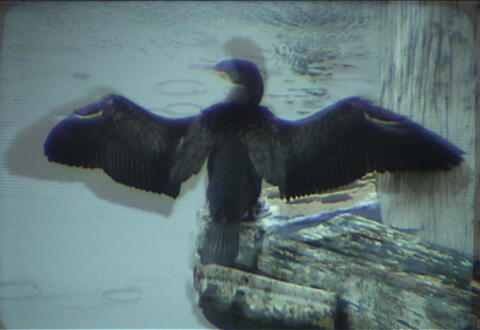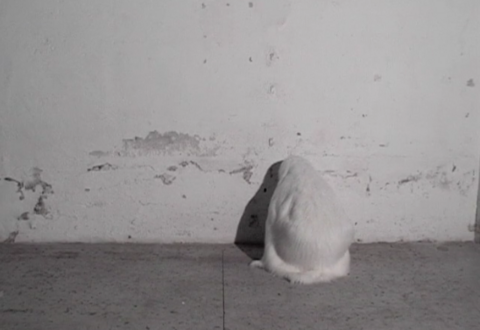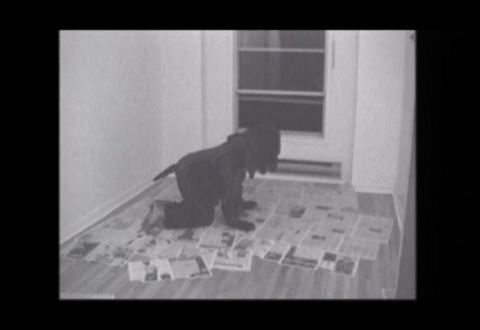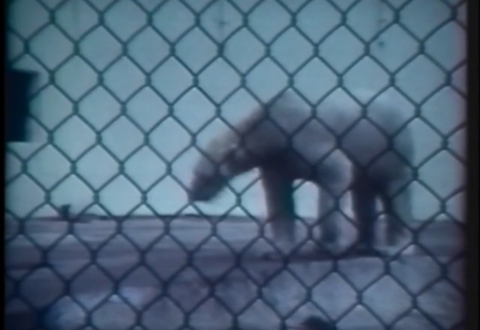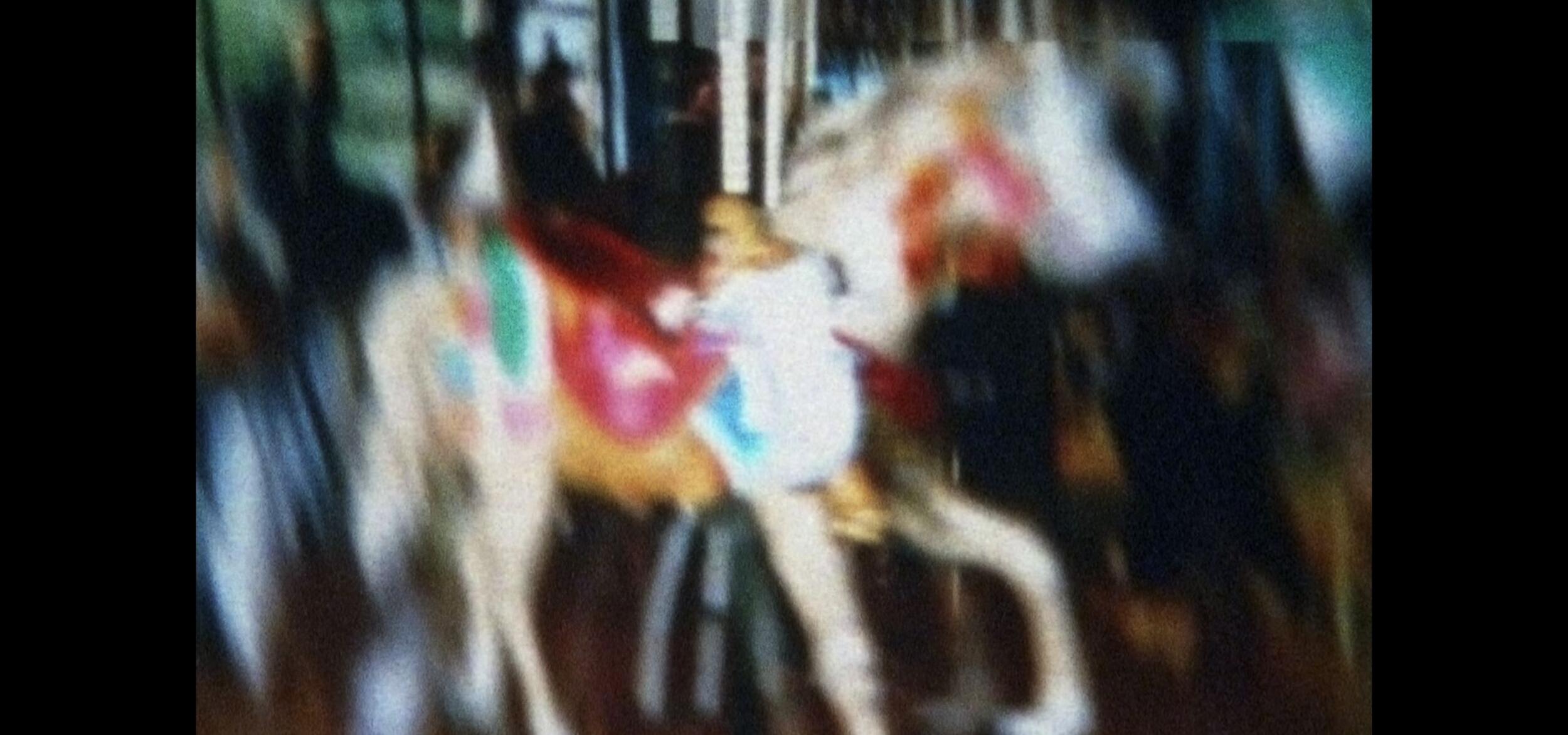
We Animals
A program that explores the proximity of humans and animals, whether historical, imaginary, physical, or psychological. With works by Alexandre Roy, Mike Hoolboom, Katherine Liberovskaya, Élène Tremblay, Yudi Sewraj, and Michèle Waquant.
Curator at Vidéographe since 2015.
List of works in program
Nous les animaux – We animals
By Karine Boulanger
Even as we stand by and wait for the sixth mass extinction that threatens to befall us, the boundary between human being and animal fades day by day. The traditional hierarchy, convenient and reassuring, which positions us above other living beings, gradually crumbles as we gain greater understanding of the diversity of intelligence, awareness, and agency. Neuroscience, biology and also ethics and law throw the distinctions we make between animals’ feelings, affects, perceptions, psyches and rights, and our own into question. The videos that have been put together here relate the human experience to that of animals, even presenting them as interchangeable. Evoking history, mythology or psychology, they assert that the animal is human too.
Journey on a tiger’s back
The programme opens with Tigre by Alexandre Roy. In this abstract animation, the idea of the animal is reduced to its simplest expression: name, orange and black colours conventionally associated with the wild animal, speed, and graceful movement. Such primal, animal energy is also associated with rock music, which has often celebrated the tiger in its iconography. In these ever-transforming images, the essence of the beast and space seem to blend, the strokes evoking feline movements one moment, grasses or obstacles the next.
“It’s hard to be a master, and understand anything about love.”
In 3 Dreams of Horses, Mike Hoolboom presents us with the animal’s perspective. He imagines recent history from the point of view of the horse, the pre-eminent animal of Western art, mythology and history. Domestication and the master’s close and inter-dependant relationship with the animal are bathed in a complex and nostalgic love. “We learned the language of our masters. Though we couldn’t help wondering why so few of you bothered to learn ours,” the horse reflects. A one-sided understanding that challenges the relationship based on empathy and admiration that is imbedded in the representations of the horse that the artist has assembled, which include archival images, fairground rides and fireworks.
Ritual
In Rantdance, Katherine Liberovskaya observes a cormorant in close proximity. The bird and the human being seem to mirror each other, facing the same issues – family, home, the couple. The animal exists in an everyday urban reality that would seem banal were it not for the way that the image has been treated with a synthesizer. The fluid instability of the image, its duplication and repetition, coupled with the haunting soundtrack by Margolis, lends a hieratic, hypnotic aspect to the bird’s movements. It is not insignificant that the synthesizer is that of Paik and Abe (1970), a sort of mythical ‘animal’ from the early days of video art. This meeting of technology and the cormorant’s dance makes for a video that is simultaneously dated and timeless. Liberovskaya and Margolis use a similar approach of combining image treatment and sound in Frogfields (2010), which is also available on Vithèque.
Attraction
Continuing the exploration of proximity and observation, Flocon de neige by Élène Tremblay addresses the agonizing issue of captivity and its use as a tourist attraction. The video-maker plays the role of a gorilla from the Barcelona zoo, who would habitually turn her back to visitors. Facing a wall and her own shadow, the artist reinvents her behaviour, adopting a dancing restlessness. The minimalist staging and the monochrome fur and décor add to the sense of unease. As much for the gorilla as for the performer, this gesture of removing oneself from the viewer’s gaze seems strange and unnatural: the fact that the former is aware of our gaze to the point of deciding to remove herself, and the latter pretends to ignore us in her artistic practice. Our desire to watch is no longer reciprocated. This is enough to deconstruct the spectacle and the voyeurism inherent in our relationship to the animal—even to performance.
“I see myself as a bear”
In Rut, the video that inspired this programme and around which it has been built, Yudi Sewraj pushes this idea of identification to the animal with results that are simultaneously humorous and sad. In each of the film’s two scenes we find a human disguised as a bear: a human as he wants to be, as he sees himself—a text that reads, “I see myself as a bear” tells us as much. In an empty room in an apartment, our bear turns around in circles; he seems hopelessly alone and stuck in an existential ennui, which the film’s title emphasises. The newspaper that covers the floor could call to mind a litter or a work in progress. He moves from all fours to standing upright, which gives him the appearance of a hybrid, uncertain being. In scene two, the bear shaves his chest. An incongruous action if ever there was one, it also lends the work an insurmountable duality. This video made in 1998 takes on a new dimension in an era of the shattering of identities, notably of gender, and of subcultures such as that of “furry fans,” which is rooted in an anthropomorphism that is at times innocent and at other times can be troubling.
A nostalgia for savagery
In À quoi rêvent les vieux ours? Michèle Waquant also uses the figure of the bear to provoke a reflection on our relationship to the animal and to nature. The pitiful old bear in its enclosure at the zoo and the city dweller are prisoners of the same self-alienation, circulating aimlessly in artificial spaces. The mystery preserved in ancient myths and legends seems to have been forgotten in favour of the mummified nature of natural history museums. Over all of this hovers the nightmarish figure of Issei Sagawami, who made headlines in 1981 following a murder and an act of cannibalism that he claimed was an artistic gesture. What is this nostalgia for the wild animal within us? Taboo, fantasy or salvation?
We hope you enjoy the programme.
Translation: Sarah Knight
Image: Mike Hoolboom, 3 Dreams of Horses, 2018
See also: Espace art actuel, no. 121, "Animal Point of View", winter 2019.
